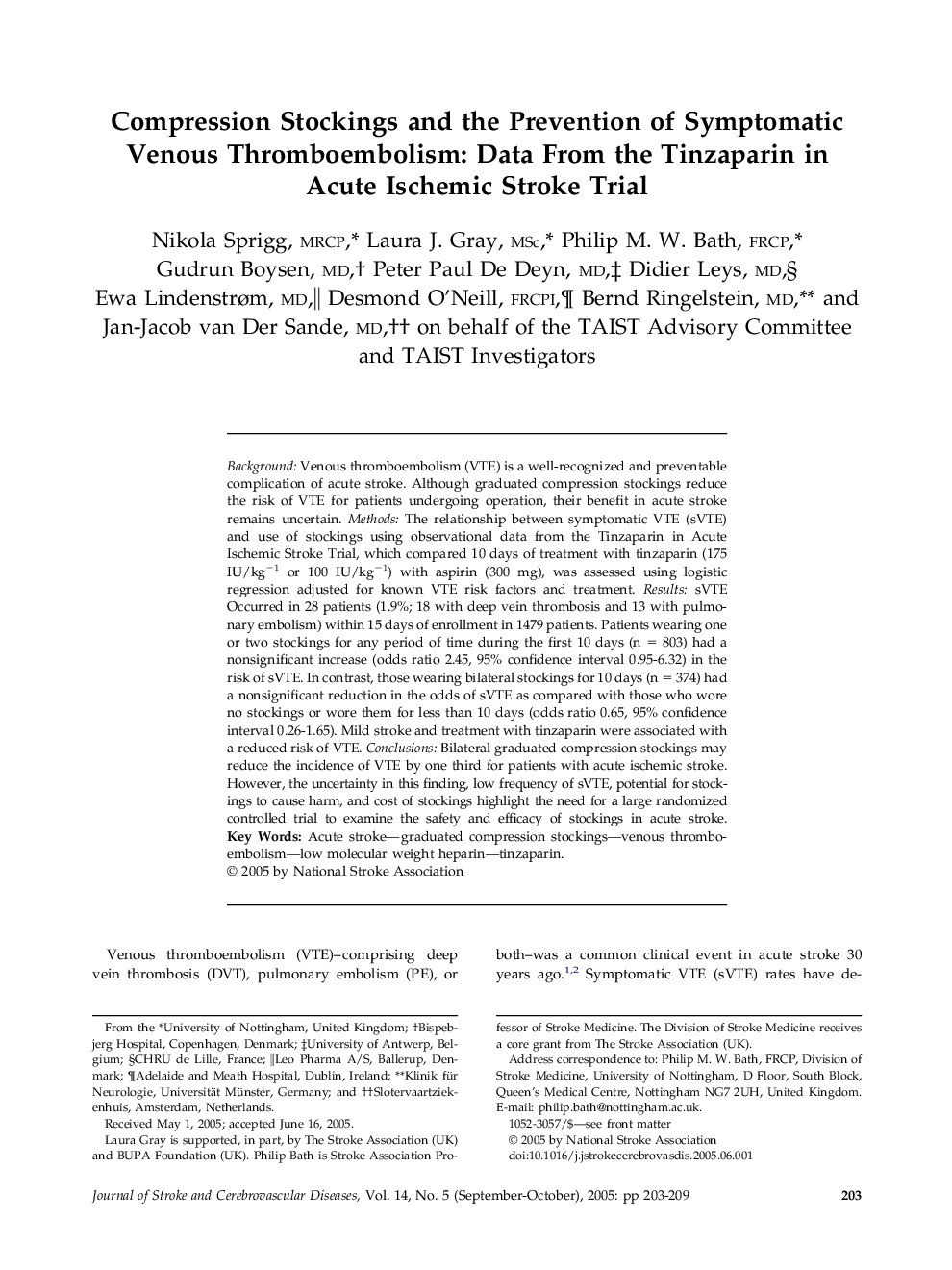| Article ID | Journal | Published Year | Pages | File Type |
|---|---|---|---|---|
| 9076060 | Journal of Stroke and Cerebrovascular Diseases | 2005 | 7 Pages |
Abstract
Background: Venous thromboembolism (VTE) is a well-recognized and preventable complication of acute stroke. Although graduated compression stockings reduce the risk of VTE for patients undergoing operation, their benefit in acute stroke remains uncertain. Methods: The relationship between symptomatic VTE (sVTE) and use of stockings using observational data from the Tinzaparin in Acute Ischemic Stroke Trial, which compared 10 days of treatment with tinzaparin (175 IU/kgâ1 or 100 IU/kgâ1) with aspirin (300 mg), was assessed using logistic regression adjusted for known VTE risk factors and treatment. Results: sVTE Occurred in 28 patients (1.9%; 18 with deep vein thrombosis and 13 with pulmonary embolism) within 15 days of enrollment in 1479 patients. Patients wearing one or two stockings for any period of time during the first 10 days (n = 803) had a nonsignificant increase (odds ratio 2.45, 95% confidence interval 0.95-6.32) in the risk of sVTE. In contrast, those wearing bilateral stockings for 10 days (n = 374) had a nonsignificant reduction in the odds of sVTE as compared with those who wore no stockings or wore them for less than 10 days (odds ratio 0.65, 95% confidence interval 0.26-1.65). Mild stroke and treatment with tinzaparin were associated with a reduced risk of VTE. Conclusions: Bilateral graduated compression stockings may reduce the incidence of VTE by one third for patients with acute ischemic stroke. However, the uncertainty in this finding, low frequency of sVTE, potential for stockings to cause harm, and cost of stockings highlight the need for a large randomized controlled trial to examine the safety and efficacy of stockings in acute stroke.
Keywords
Related Topics
Health Sciences
Medicine and Dentistry
Clinical Neurology
Authors
Nikola MRCP, Laura J. MSc, Philip M.W. (FRCP), Gudrun MD, Peter MD, Didier MD, Ewa MD, Desmond (FRCPI), Bernd MD, Jan-Jacob MD, TAIST Advisory Committee and TAIST Investigators TAIST Advisory Committee and TAIST Investigators,
